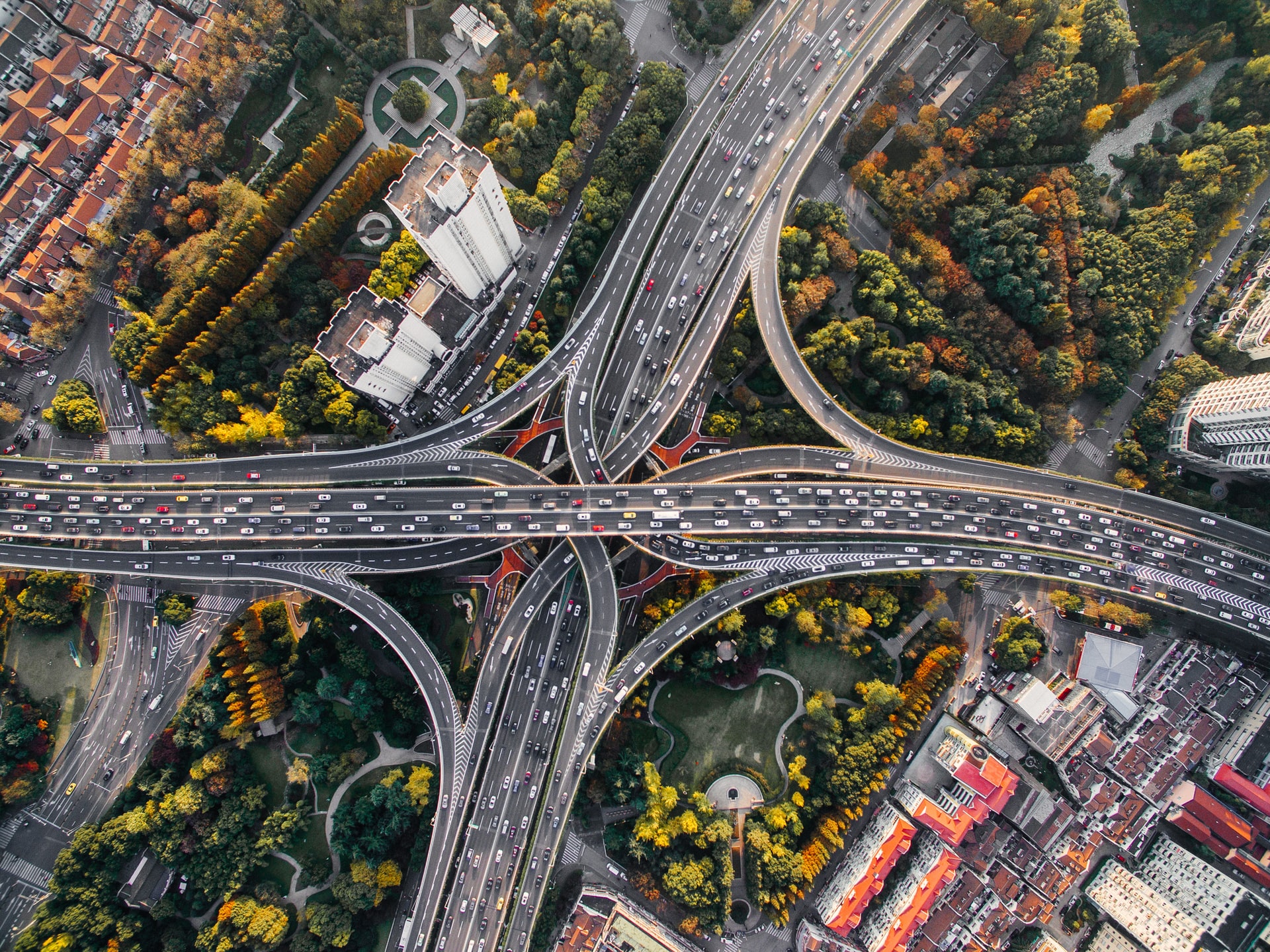How deep is 5G fake news?
5G’s costs, benefits and myths
by Miguel Coma
Here are the questions I live with: Can we trust the mainstream media and social media? Are all peer-reviewed studies published in scientific journals of high quality and independent from industry agendas? Are high-quality videos of statements from famous people always real?
When I ask these questions, I get a clear NO to each one. Actually, I consider few things as undoubtedly true. I consider doubt a foundation of wisdom and science.
In my private life and professional research, I assess information from “totally incorrect” to “undoubtedly true.” Between these extremes, I tend to trust information from people who have no conflict of interest. I give more credit to experts with experience and/or academic knowledge. When speaking freely puts a person’s career or life at risk, I hear the alarm that something is off. I like to compare different opinions before I make my own. I am suspicious of people who claim to know the truth. Approaching truth takes time and requires patience.
In 2020, researching 5G (the fifth generation of mobile telecommunication networks) led me to discussions with great people. It truly opened my mind. I had to put aside what I learned in engineering school—and recognize that technology needs limits. I spotted propaganda (fake news) that promotes the telecom industry. I committed myself to learning alternatives to public 5G networks.
In previous letters, I explained that 5G will not make mobile telecommunications or society “greener.” I reported 5G’s huge electricity consumption, extraction demands and climate change impacts. To reduce its environmental impacts significantly, I proposed limiting 5G deployments to privately-owned factories, where it can benefit, rather than as a public network. Today, I want to discuss 5G’s benefits and myths, and how we can avoid its environmental impacts.
We should consider 5G’s benefits from the perspectives of individuals and businesses. Industry enthusiasts claim that 5G will improve individuals’ connections in terms of speed and response time, even with massive numbers of connected devices. Yet, compared to 4G, even major industry players[1] report that 5G will provide customers no substantial improvement.
However, some large manufacturing businesses could benefit from 5G Phase 2 (https://www.3gpp.org/release-16) technical enhancements. Still in development, these improvements include the Industrial Internet of Things (I-IoT).
I take the mobile industry’s stories about 5G’s potential for technological revolution with the highest caution. Here is a quick summary of common myths about 5G:
Speed While 5G can deliver speeds above 1000 megabits per second (Mbps), high-quality videoconferencing needs just 0.3 Mbps; high-definition (HD) needs 1.5 Mbps (https://support.skype.com/en/faq/FA1417/how-much-bandwidth-does-skype-need). On a mobile device, the highest perceived image quality can be attained at 1.5 Mbps (https://www.bcg.com/publications/2015/telecommunications-customer-insight-uncovering-real-mobile-data-usage-drivers-customer-satisfaction.aspx). Netflix recommends 5 Mbps (https://help.netflix.com/fr/node/306) for HD streaming on a large screen. Telemedicine (including surgery and medical imaging) can require between less than 2 Mbps (https://www.adechotech.com/products/) and 40 Mbps (https://www.intechopen.com/books/robot-surgery/extreme-telesurgery). The ideal speed for Internet browsing is 8 Mbps (https://www.bcg.com/publications/2015/telecommunications-customer-insight-uncovering-real-mobile-data-usage-drivers-customer-satisfaction.aspx). For ultra-HD (4K) videos (for very large screens), Netflix recommends 25 Mbps. The need for speed in virtual reality ranges from a few to a few hundred Mbps (https://www.commscope.com/globalassets/digizuite/1733-exec-paper-virtual-and-augmented-reality-final.pdf) for extremely immersive future applications. Here’s the myth-buster: with over 1000 Mbps (https://www.rcrwireless.com/20200622/analyst-angle/4g-is-where-the-money-should-be-analyst-angle), the latest 4G technology can provide all of these speeds. Improvements in image compression promised by artificial intelligence (AI) can reduce required speeds even more.
Latency or response time The industry claims that 5G could offer latencies below one millisecond (ms), but roundtrip latency in tele-surgery is already unnoticeable under 300 ms (https://www.news-medical.net/news/20151005/How-feasible-is-telesurgery-An-interview-with-Dr-Roger-Smith-CTO-Florida-Hospital-Nicholson-Center.aspx). Video streaming requires 25-75 ms (https://www.bcg.com/publications/2015/telecommunications-customer-insight-uncovering-real-mobile-data-usage-drivers-customer-satisfaction.aspx). Online gaming is set around 50 ms (http://www.eurecom.fr/fr/publication/3694/download/cm-publi-3694.pdf). To eliminate the sensation of waiting between pages, Web browsing needs 25-50 ms (https://www.bcg.com/publications/2015/telecommunications-customer-insight-uncovering-real-mobile-data-usage-drivers-customer-satisfaction.aspx). Again, 4G satisfies these latencies with as little as 30-40 ms (http://research.rewheel.fi/downloads/Rewheel_Tutela_LTE_5G_performance_drivers_Europe_17022019_FINAL.pdf) in real conditions. Manufacturers that need even lower latencies could install privately-owned (https://assets.new.siemens.com/siemens/assets/api/uuid:ebfabd16-3356-49a1-bc1e-1675f8855190/is-5g-already-robust-enough-for-the-industry.pdf) 5G Phase 2 networks.
Massive numbers of connected devices While 5G could reach one million connected devices per square kilometre, a combination of different alternative IoT[2] technologies could already connect this many machines.
This brings me to the Internet of Things (IoT) and Industrial IoT (I-IoT), machine-to-machine communication. The industry frequently claims that 5G is necessary to the IoT. Yet, 5G might actually add confusion to an already vast and complex IoT market,[3] where infrastructures already compete with each other. In a factory, however, robots, cameras, cutting lasers, high-precision drills, etc. (which need low-latency connections on highly automated production chains) could benefit from an on-site private 5G network with increased security. This does not require a public 5G network.

Autonomous cars use multiple sensors and artificial Intelligence to replace the human driver, but do not need 5G.
Autonomous Vehicles (AVs) (http://www.webbsearch.co.uk/wp-content/uploads/2019/08/Does-the-autonomous-car-need-5G.pdf) use multiple sensors to perceive their immediate environment. Artificial Intelligence (AI) devices replace the human driver. Once “trained” to drive well, the AI (https://www.nvidia.com/fr-fr/self-driving-cars/drive-platform/hardware/) can be loaded in the vehicle and drive—without 5G. AVs also use vehicle-to-anything (V2X) communications to exchange data with other nearby (equipped) vehicles and road infrastructure (such as stoplights). Here again, 5G is not necessary. Wi-Fi, 4G and light can provide V2X communications.
Drones require connections in three dimensions. Today, drones mainly use ground antennas (https://www.911security.com/learn/airspace-security/drone-fundamentals/drone-communication-data-link) that point to the drone and existing satellite communications. Mobile networks are designed to serve users near the ground—not drones (https://www.roboticsbusinessreview.com/opinion/5g-and-future-connectivity-requirements-for-drones-and-uavs/) which fly at higher altitudes. Mobile networks can be an option for small, low-range, low-altitude drones but they pose many technical challenges (https://arxiv.org/ftp/arxiv/papers/1707/1707.07534.pdf). Drone “highways” could be created with 4G or 5G antennas that point to the sky to direct drones, but they would not require a 5G public network.
Smart cities might become heavy users of the Internet of Things. But again, existing IoT technologies can provide these connections. They do not need 5G.

Farming drones embedding an artificial intelligence do not need a 5G connection.
Smart grids (https://electromagnetichealth.org/wp-content/uploads/2018/05/Wires.pdf) aim to automate utilities with IoT sensors and remote operations. Smart meters measure a ratepayer’s electricity, water and natural gas use. To avoid blackouts, critical smart grids automation needs highly reliable fibre optics and other wireline infrastructure. For non-critical applications and smart meters, existing IoT wireless technologies are already available. 5G provides no benefit to smart grids or smart meters.
In farming, manufacturers advocate for robots and drones that could use AI to monitor crops and cattle with ultra-high-definition images. Industry proposes that AI could replace the human farmer. While I’ve got issues with machines growing our food, I should report that if AI is embedded (https://blogs.nvidia.com/blog/2019/11/01/ai-helps-farmers-whack-weeds/) in farming machines, 5G is not needed. Without 5G, we could still see faster processing with the lowest possible response times—and no exposure of crops, livestock or pollinators to 5G electromagnetic radiation.

5G technology offers no benefits to telemedicine, which depends on ultra-reliable, wired networks
Tele-surgery and tele-consultation, sometimes involving x-rays, echography, RMI or robotic operations, need extremely reliable networks. Typically, reliable networks are wired. Mobile networks like 5G are only suitable for demonstrations with a dummy. Tele-consultation’s required speeds (https://broadbandnow.com/report/telehealth-requires-broadband-availability/) (2-6 Mbps) and latencies (below 300 milliseconds) can actually be achieved with 3G. Medical centers in remote areas without specialist-physicians, can provide tele-consultations with wired networks. Very remote clinics can use existing satellite (https://www.ncbi.nlm.nih.gov/pmc/articles/PMC4983067/) networks. 5G technology provides no benefits to telemedicine.
Virtual Reality (VR) is mostly used indoors with fast and low-latency, fixed networks like Wi-Fi or Wi-Gig. For travellers, immersive VR applications using 4G are already available and only require 4 Mbps (https://www.commscope.com/globalassets/digizuite/1733-exec-paper-virtual-and-augmented-reality-final.pdf). Indoor and outdoor Augmented Reality (AR) is less data-consuming than VR and can use existing fixed (Wi-Fi) and mobile (4G) technologies. I should caution that studies on VR’s health effects (including children’s vision) are very limited.
In December, I described my dream to eliminate the need for 5G by reducing mobile traffic growth and/or using 4G to its fullest capacity. The mobile operators’ worldwide association, GSMA, shows in a 5G paper (https://www.gsma.com/futurenetworks/wiki/5g-era-mobile-network-cost-evolution/) that the increased pace of traffic growth is not driven by consumer demand, but by providers’ pace of 5G deployment.[4] Unlimited mobile data plans lead consumers to stop evaluating the best network (cable, Wi-Fi) for their connection. This shows that a joint effort from legislators, providers and consumers could reduce mobile traffic, even lead to its degrowth. As you know, the European Union now aims to decrease its carbon emissions by 5% annually. The telecommunications industry has a unique opportunity to lead the way toward a sustainable future—by building on existing networks and halting 5G.
Essentially, the 5G industry is in search of market opportunities. 5G is not a response to market demands.[5] Nothing can justify new, massive, energy-guzzling 5G infrastructures. Could legislators, providers and consumers who truly aim to reduce energy use, extraction and greenhouse gas emissions prevent unlimited mobile data growth and commit to making use of existing infrastructures?
After months of intensive research and discussions with experts and industry players, I still have not found one convincing need for wide-scale, public 5G networks. At this historic moment, when human immunity needs to be stronger than ever, why would we risk emitting another layer of (untested) electromagnetic radiation on the general public and wildlife? If every Internet user, legislator and provider reviewed 5G’s impacts with due diligence, could 5G private infrastructures be limited to industries that truly could benefit from it?
ENDNOTES
1. Example 1 : French Senate, audition of a mobile operator CEO. « (…) for customers, (5G will bring) the appearance of a 5 instead of 4, which the customer will judge more effective by reflex. On the other hand, it will not change anything in the consumer’s daily life (…). The speed, in fact, will not be really noticeable. (5G) is an operator interest, which is absolutely not perceived by the end consumer. » (translation) https://www.senat.fr/compte-rendu-commissions/20200608/devdur.html
Example 2 : William Webb, The 5G Myth, 3rd Edition, 2019
2. Matt Hatton & William Webb, “The Internet of Things Myth”, 2020
3. Ibid.
4. In Fig. 4, three 5G deployment pace strategies are proposed to mobile operators, each with a related data traffic growth rate (CAGR) https://www.gsma.com/futurenetworks/wiki/5g-era-mobile-network-cost-evolution/
5. William Webb, The 5G Myth, 3rd Edition, 2019
Miguel Coma is an engineer in telecommunications and an Information Technology architect. After a decade in telecommunications (with two mobile operators and an equipment manufacturer), he now works as an enterprise architect in the bank-insurance sector. He believes in technology’s potential to create sustainable progress.
Miguel Coma’s articles are part of a series written with Katie Singer. The series is available at www.OurWeb.tech/letters.
